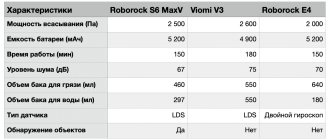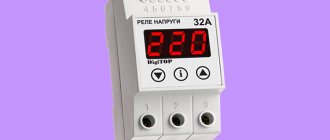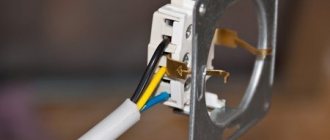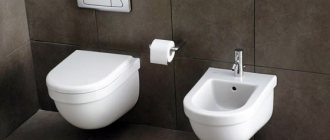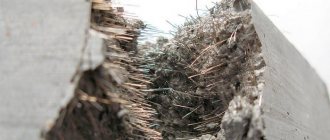A vacuum cleaner is one of the most faithful assistants in the household. It makes cleaning a house or apartment easier, better and faster. This device is practically indispensable in the fight against allergy sources - pet hair, dust mites in carpets, plant and flower pollen.
When choosing a vacuum cleaner, it is recommended to pay attention to 5 main factors:
- type of unit;
- type of dust collector;
- filtration levels;
- engine power;
- type of cleaning.
Types of vacuum cleaners
There are 8 main types of vacuum cleaners on sale:
- detergents;
- robot vacuum cleaners;
- with aquafilter;
- cyclone;
- manual;
- with turbo brush;
- with a dust bag;
- automobile.
Washing models have 2 reservoirs for liquids: one for dirty water, the second for water with detergent. During operation of such a unit, water with detergent is supplied under pressure to the surface to be cleaned, after which it is immediately sucked in and flows into a container for dirty water.
When cleaning pile carpets, the vacuum cleaner is turned on at full power to prevent water from being absorbed into the carpet, which subsequently quickly becomes dry. Some models are equipped with a device that dispenses the supply of cleaning agent. This device allows you to rationally distribute the detergent and do better cleaning.
The robot vacuum cleaner is capable of automatically, without human intervention, performing dry and wet cleaning in a room, independently avoiding obstacles. After finishing work, it returns to the charging station on its own. High-level models are able to create and remember a “map” of the area being cleaned and subsequently carry out cleaning of the premises more quickly and efficiently.
Vacuum cleaners with an aqua filter pass the sucked air through a water tank, cleaning it of dust. Unlike a classic dust collector, these models suck up dust equally well for a long time.
Cyclone vacuum cleaners, when sucking in air, force it to move in a spiral in the dust collector. During this movement, the air passes through a coarse filter, a dust filter and a fine filter, as a result of which the air at the outlet has a minimum percentage of residual contaminants.
Manual models are well suited for cleaning small spaces and hard-to-reach places. They are compact and have a low dead weight, and built-in batteries allow them to provide up to 30-40 minutes of continuous operation.
Models with a turbo brush do a good job of cleaning hair, wool and threads and are recommended for those who have pets. The design of the turbo brush has a shaft with spiral bristles mounted on it. The shaft is driven by the flow of intake air; in some models it rotates due to a separately installed electric motor. This shaft is responsible for removing hair, wool and other similar contaminants from the intake air.
Vacuum cleaners with a dust bag are classics in the world of home cleaning equipment. Such devices appeared more than 100 years ago and are still in steady demand. They are easy to use and care for, and are always ready for use. Removing the paper bag containing accumulated dust is a simple and hygienic procedure.
A separate category includes car vacuum cleaners designed for cleaning the car interior. They are compact, so they can be used to reach the most inaccessible places. A number of models have the ability to absorb liquid formed on interior floor mats. Such devices are powered either from the car’s 12 V on-board power supply or from a battery.
Premium Products
Such models are quite rare. They have many advantages compared to conventional devices.
Rainbow products are a clear representative of this subtype of vacuum cleaners. Their product can perform the functions of several household appliances.
Such vacuum cleaners are more compact, have a three-color variation, and are equipped with LED backlighting of the housing. The specific model has the following name - Rainbow-E2.
Types of dust collectors
The dust collector is the dirtiest part of any vacuum cleaner. But the quality of cleaning, ease of use and care of the device depend on it. There are 3 types of dust collectors:
- bag;
- plastic container;
- aquafilter.
Dust bags, in turn, are divided into disposable and reusable. Disposable bags are made of paper and are designed to hold the calculated volume of accumulated contaminants. The procedure for replacing such a bag is simple and hygienic: the old bag is removed and thrown into the trash with all its contents, and a new one is installed in its place. They are made of multi-layer paper and are equipped with a damper so that during the replacement procedure the dirt from the old bag does not spill out.
Reusable bags are made from fabric. They are not equipped with a damper and retain dust worse, so when cleaning the dust collector, some of the dust remains on the outer surface of the bag itself. The procedure of shaking out the contents is quite uncomfortable and unhygienic. However, a reusable bag saves the owner money, as it can last for years and decades.
In the last decade, manufacturers have equipped their vacuum cleaners with both disposable paper and reusable textile bags. The buyer himself decides which type of dust collector is more convenient for him to use.
Plastic dust collectors can be found in devices with cyclonic air purification. The procedure for cleaning it is relatively quick and comfortable: the plastic box is removed from the vacuum cleaner, after which the dirt from it is poured into the trash.
An aquafilter is a reservoir of water, which becomes more and more dirty as it is cleaned. Cleaning this element does not create difficulties for the user: dirty water is poured into the sewer, after which the filter is washed with water and installed back.
Cyclone and aqua dust collectors, unlike bags, provide the maximum level of air purification and filtration. In aquafilters, the dust filtration rate is close to 100%. They are able to trap germs and bacteria, and also have a long service life.
Vacuum cleaners with cyclone dust collector
The device works as follows: waste is collected in a special place, which is equipped with a unique cleaning system (garbage moves in a spiral, small substances are lowered, and large pieces are redirected to a dust container).
Advantages:
- Long service life;
- Ease of use;
- Stable work;
- The model does not make much noise.
Flaws:
- Big sizes;
- The presence of soft elements reduces the quality of cleaning;
- Solid debris poses a risk of damaging the housing.
Filtration levels
Expensive vacuum cleaner models have up to three levels of air filtration. The cheap ones use only one level - a dust bag.
A bag, plastic container or aquafilter is considered the first level of air filtration and cleans it from coarse contaminants, light particles and dust.
The second level of filtration is considered to be a fine particle filter, which is installed at the entrance to the vacuum cleaner engine. Thanks to this filter, the motor is less likely to fail and has a long service life. Depending on the device, these filters are either replaceable and cleanable or non-replaceable. If such a filter does not have the opportunity to be cleaned, then as it becomes dirty, the vacuum cleaner engine reduces its power, begins to overheat and fails prematurely.
A fine filter is installed at the air outlet of the vacuum cleaner. It additionally purifies the air leaving the device for user comfort. It can be easily removed from the device body for cleaning or replacement. In most cases, this element is HEPA filters, designed for medical institutions and capable of removing up to 99.95% of solid particles.
General description of the vacuum cleaner and its purpose
A vacuum cleaner is an electrical device designed for cleaning rooms and cleaning various surfaces.
It works on the principle of capturing dirt and dust with sucked air, which is why it got its name. After suction, contaminants remain on the filter and are removed when filling. The appearance of the vacuum cleaner occurred in the last third of the 19th century in the USA. And in the next century, this reliable and convenient device became firmly established in everyday life and work throughout the world.
Any vacuum cleaners - household or industrial, portable or stationary - are designed approximately the same. They consist of elements such as:
- Electrical engine;
- compressor – pumps air through filters;
- filter device – separates dust and collects it in a container;
- a set of tools - brushes, nozzles, extensions;
- Most vacuum cleaners come with a flexible hose.
Portable vacuum cleaners are divided into:
- manual;
- knapsack;
- floor
The latest in advanced technologies of our era are robotic vacuum cleaners, which themselves consistently move across a certain area, ensuring its cleanliness.
Choosing a vacuum cleaner when purchasing from all this variety is not an easy task. Which is better? Which one is more necessary? Which one is more practical?
Vacuum cleaner power
The technical characteristics of the vacuum cleaner include 2 types of power: suction power and electric motor power.
In the store, on the price tag, in most cases, only the power of the electric motor is indicated. Firstly, it allows a potential buyer to assess the level of electricity consumption of the device. Secondly, it has a higher meaning and attracts attention.
The suction power can be found out from the accompanying documentation: from the data sheet, from the operating manual, from the specification.
The electric motor power of modern vacuum cleaners varies from 1500 to 3000 W. At the same time, motor power can have little effect on suction power, so experts do not recommend choosing powerful devices. They can be noisy, consume a lot of electricity, but have low suction rates.
The efficiency of a vacuum cleaner depends only on the air suction power. It ranges from 250 to 500 W. In some cases it can be measured in aeroW. The documents always indicate its maximum value, which is measured when the device is operating with an empty dust container. However, as the dust container fills, the suction power decreases to 60-70% of its maximum value.
In addition, the filtration system and type of dust collector affect the suction power. The multi-level filtration system always reduces suction power with the exception of cyclone models. They always have higher suction power due to the acceleration of air flow in the dust collector.
Devices with high suction power are expensive and when purchasing them, the suction power is not always justified. Therefore, it is better to buy devices with adjustable suction power. Depending on the type of surface to be cleaned, you can set the required parameters:
- 350 W are suitable for cleaning dust on dry and smooth surfaces, for cleaning lightly dirty small rooms;
- 400 W are suitable for cleaning carpets from dust and wool;
- 450 W are needed for cleaning long-pile carpets and upholstered furniture;
- 400-450 W are suitable for cleaning large surfaces and heavily soiled rooms.
For periodic cleaning in a small apartment, a medium-power device is sufficient. If the house area is large, a more powerful unit is required. If there are pets or allergy sufferers in the room, it is better to buy a more powerful model. The maximum suction power is good for cleaning long-pile carpets, but it also leads to increased wear and tear.
Battery-powered upright hand vacuum cleaners and robot vacuum cleaners have the lowest suction power ratings. Therefore, it is recommended to buy them for daily cleanliness. They are ineffective for complete cleaning. However, in the near future, manufacturers promise to offer cordless vacuum cleaners with high suction power - up to 400-500 W.
Dissecting a cheap robot vacuum cleaner
Good day. Today we will study the guts and circuit diagram of a budget robotic vacuum cleaner, electric broom Agait EC MINI. Taking into account the primitive algorithm, it can be called a robot very conditionally. Lots of text, pictures and a survey for starters. I didn’t have any super expectations when purchasing, although I was pleasantly surprised - it works and even collects dust, maintaining cleanliness by increasing the intervals between regular “manual” cleaning. Since this model is the youngest (bought in a chain store for the equivalent of $100), we will not discuss the functionality of this product out of the box, but will look at the scope for tinkering and upgrades. I see this device as a ready-made platform for a DIY robot vacuum cleaner. The first candidate for an upgrade is, of course, the brain. To begin with, you can leave the existing power part, and use something from the Arduino clan as a controller. There should be no problems with implantation into the current circuit, because The original version uses an EM78P153K microcontroller with a 5V power supply in a 14-pin package (minus 2 power pins) for a total of 12 pins for communicating with the circuit.
General view of the internals
To plan the implantation of a new one, you first need to imagine what actuators and “sensory organs” this “animal” has.
What does the manufacturer of this miracle offer us?
Charger 19V 600 mA
Ni-MH battery made of 12 AA cells with a promised capacity of 800 mAh
2 wheel modules with commutator motors.
Internal organization
Planetary reductor
Engine
A centrifugal fan draws air through the dust collector.
12V 0.5A
2 side brush drives.
3 IR sensors for protection against falls from steps.
Outside
From the inside
Bumper with 1 collision sensor (conventional slot optocoupler).
Slot optocoupler with a top cover.
This model of vacuum cleaner does not have an optical sensor at the suction port (IR LED + photodiode) and the corresponding part of the circuit. Although there are spaces in the case and wiring on the board, so you can add more if you wish.
Consider the electrical circuit
The diagram is copied from the board, so inaccuracies are possible.
Unnamed transistors are something small SOT23. Q1, Q9, Q10 with Chinese marking Y1 - possibly SS8050, the rest with CR marking - possibly 2SC945. Although this is not particularly necessary to understand the logic of the circuit. The unnamed diodes are most likely 1N4148 in SMD design, and their type is also not particularly important. There is no microcontroller connection. Absolutely not. So it is not on the diagram, but there is a reference to the conclusions. It is simply powered by +5V and the remaining legs diverge according to the circuit.
Let's go through the main nodes
Q1, Q2, Q15 This is the battery charging key.
I note that here it is charged simply by time with a maximum current limitation through a 5-watt resistor R73. There is no control provided, so looking at the diagram, I charge my battery with an IMAX clone with the end of the charge according to ΔV, it will last longer. I depicted the 8.25V stabilizer on the MC34063 as a block, since the microcircuit is connected according to a standard circuit. Resistor Rsc (see datasheet) 0.22 Ohm. Those. There is a current limitation, not only to protect the microcircuit itself, but for something a little lower. It powers the wheel modules and side brush drives.
The dual comparator LM393 is used to control the power loss of the wheel modules and side brushes (in case of jamming by foreign objects or mechanical failure) and battery discharge. These two conditions for the controller are one event.
The suction fan is turned on together with the side brush drives by transistor Q24. In this case, the fan is powered almost directly (minus the voltage drop across the D16 diode and the open transistor) from the battery. Overclocking, however, the side brushes, on the contrary, are powered by a reduced voltage of 8.25V minus the drop on 3 diodes and an open transistor.
In this case, the fan is powered almost directly (minus the voltage drop across the D16 diode and the open transistor) from the battery. Overclocking, however, the side brushes, on the contrary, are powered by a reduced voltage of 8.25V minus the drop on 3 diodes and an open transistor.
Optocouplers JK1 and JK2 are slot transistor ones. JK2 is normally darkened (the lid is closed - the transistor is closed) and JK1 is normally illuminated (the bumper does not rest anywhere - the transistor is open)
Transistor Q25 contains a switch that switches the power supply to the LEDs of the optocouplers and the entire assembly of fall sensors. If there is 19V from the charger it is closed, in all other cases it is open.
Transistor Q8 contains a circuit for monitoring the presence of 19V from the charger. The signal goes to pin 7. microcontroller. The phototransistor of the cover optocoupler is also connected there. Those. a connected charger and an open cover for the controller are one event. How does the controller distinguish between when the lid is open and when the charger is connected? By bumper sensor. When the charger is connected, the phototransistor will be shaded due to the LED power supply being turned off (key Q25). So if you open the lid and press the bumper while the charging device is disconnected, the vacuum cleaner will think that it is charging; it must also stand on the surface so that the fall sensors do not work (when the charging device is connected, they are disabled Q25). This is the price to pay for the extreme simplification of the circuit. The charging mode is indicated by a flashing green LED (in the lower left corner of the diagram). In order not to mislead (or perhaps not frighten) the user of a vacuum cleaner that shows charging without a charger, the designers simply do not allow the LED to blink thanks to the Q9 transistor, although a meander goes from the first pin of the microcontroller to the LED. Crutches.
Wheel motor drivers
Nothing remarkable stands out. It works simply - there is a logical 0 on both inputs - we are standing. We give 1 to one of the inputs - we are going either forward or backward. We give two 1sts and plant +VCC Motor on the ground. There is no foolproof protection, so either two 0s or one 1 each.
Stair fall protection sensors
The circuitry consists of optical pairs of LED-photodiode directed at the surface, while the photodiode is structurally more distant from the surface and can be partially covered with an adjustable shutter to select the trigger height (there is a photo at the beginning of the article). To decouple from the level of illumination in the room, the LED is modulated with a certain frequency. The diagram is approximate for understanding the principle of operation. The dedicated part is individual for each channel, the generator on the first and the comparator on the last operating unit are common to all. They show their activity as logical 1 on diode D2. The activation of the fall sensors and the bumper stopping at an obstacle for the microcontroller is one event.
"Summary" on the legs of the microcontroller
If active, 0 will be marked. 1 Green LED 2. The bumper has hit an obstacle or any fall sensor has been triggered - active 0 3. Buzzer (sweeter) 4.+5V 5. The power supply to the motors of the brushes and wheels is drained and the battery is discharged. 6. Turn on the suction fan and side brushes. 7. Charger connected or lid open - active 0 8. Left wheel 9. Left wheel 10. Turn on charging key - active 0 11. GND 12. Right wheel 13. Right wheel 14. Red LED.
Bottom line
In my opinion, the most important drawback of the current scheme is the combined activation signals of the bumper and fall sensors, therefore, with the current algorithm, when the vacuum cleaner encounters an obstacle while moving “straight”, it simply turns 180° and moves away from it to another wall, and so on several times along the same trajectory .
Therefore, it is very desirable to separate these signals for a more adequate response to obstacles and the “end of the earth.” It would also be nice to add some intelligence to the charging circuit. Now you can unsolder your native microcontroller, connect *uino, or whatever you want and invent your own algorithms, but this will already be in the second part.
Everything stated in this article is purely my conclusions and impressions and expresses my opinion on this issue, but how many people - so many opinions.
Type of cleaning
There are 2 types of cleaning: dry and wet. On sale you can find vacuum cleaners designed only for dry cleaning of premises. Models with wet cleaning are universal, as in all cases they have a dry cleaning function.
Devices for dry cleaning can be equipped with a bag or container for collecting dust and even with a water tank - varieties with an aqua filter. The latest types not only purify the air 100%, but also humidify it, which is considered beneficial for health.
Washing vacuum cleaners are capable of performing the function of wet cleaning in premises. Besides this ability, they have many other useful abilities. Using washing vacuum cleaners you can:
- unclog a clogged sink or bathtub;
- wash windows, tiles, walls and furniture;
- Clean up spilled liquids.
Wet cleaning devices have not only advantages, but also disadvantages. They are more expensive, more massive and have larger dimensions. After each use of such a device, it is necessary to disassemble it, pour out the detergent and dirty water, rinse and dry the tanks for them. After wet cleaning, up to 50% of the water sprayed by the device will remain on the surface and it takes time to dry.
Carpets made from natural materials, parquet, laminate and certain types of furniture are highly sensitive to moisture, and it is not recommended to clean them with a vacuum cleaner.
Over the past few years, vacuum cleaners with steam cleaning surfaces have appeared on sale. The water vapor created by the evaporator allows for deeper cleaning of the room, kills dust mites and most germs. This quality cannot be achieved with a classic vacuum cleaner.
Leading manufacturers of vacuum cleaners: who offers high-quality and efficient products
To compile a list of the most reputable manufacturers of apartment vacuum cleaners, you need to study various reviews, consider the assortment, find out how reliably the products work, what is the cleaning efficiency.
There are manufacturers who have concentrated their activities on the production of specific types of vacuum cleaners
If you are looking for something specific, then you should familiarize yourself with the manufacturer’s assortment, and then pay attention to the quality of production.
The brand, which came to us from Italy with the great name Hotpoint-Ariston , specializes in the production of vacuum cleaners for dry cleaning. Judging by the reviews, their products operate very quietly, have cords of a decent length, the units are easy to use and have decent technical characteristics.
The colors of the models may also be different.
Power allows for efficient and high-quality cleaning
The German brand Zelmer guarantees the quality of its products. This company has been pleasing people with its high-quality and efficient products for more than 50 years.
All technical characteristics are at a high level
Zelmer offers vacuum cleaners with different configurations and functions.
A large selection of color variations that appeal to discerning people. Thanks to this, you can purchase a model that suits the interior and design of your apartment.
Bosch concern does not even particularly need advertising: the brand has long been firmly entrenched in the market of all kinds of equipment. There are a lot of models, you can choose a product to your taste according to the ratio, price, appearance and technical characteristics.
Bosch vacuum cleaners have virtually no noise, and the power is pleasantly high
Other manufacturers whose products are in demand are Philips , Miele , Dyson , Kärcher , Samsung .
Constructive details and quality of cleaning
Some design features of the device affect the quality of cleaning and ease of use. For example, a hose. It must be of sufficient diameter (at least 5 cm) so that it does not become clogged frequently.
The length of the flexible hose is important - the longer this accessory, the more convenient it is to clean. Especially in rooms of 15 square meters. and more. A length of 2.5 m is needed for cleaning high furniture and ceilings
The strength of the material is also important, otherwise the part will crack, which will reduce the suction power.
In addition to the main components, the quality of operation of the device is also influenced by seals, bushings, and bearings. If the joints are made of fluoropolymers, this ensures their tightness.
Bushings and bearings made of fluoroplastic and polyamide extend the life of the moving parts of the device.
Additional information about different types of vacuum cleaners, as well as tips on choosing the right unit, is provided in this article.
Additional functions, components and accessories of vacuum cleaners
Modern vacuum cleaners are equipped with a solid set of attachments, components and accessories. Often such kits are sold as additional options. Then, when purchasing them, you need to know whether they will fit the existing type and brand of vacuum cleaner.
The “mandatory” set of any vacuum cleaner is:
- nozzle for carpets and floors;
- flat nozzle with a slot;
- brush attachments with long bristles for furniture or parquet;
- turbo brushes for intensive cleaning.
Customers are also offered additional functions that often determine the choice of a vacuum cleaner:
- temperature protection – to protect against overheating;
- blocking – to protect against starting without filters;
- aromatization – to eliminate the smell of dust;
- humidification of the room atmosphere;
- automatic rewinding and adjustment of cord length;
- bactericidal lamp - to eliminate microorganisms;
- water and steam level indicators for the corresponding models.
So, everything that has been said will help to correctly answer the question: how to choose a vacuum cleaner?
Conclusions and useful video on the topic
Analysis of the design and operating principle of a vacuum cleaner with pressure sensors and two electric motors - in the brush and the body of the device.
The examples of several designs of vacuum cleaners clearly show that, regardless of the type, they all serve equally as “dust cleaners.” Their effectiveness depends on the filtration system, engine power, and the presence of various nozzles.
Which vacuum cleaner did you choose for your home or apartment? Please tell us why you chose a particular model, and whether you are satisfied with the performance of the purchased equipment. Add reviews, comments and ask questions - the contact form is below.
What does a vacuum cleaner consist of, the main structural elements
The vacuum cleaner consists of:
- Housing made of plastic or metal. Protects the elements inside from mechanical stress.
- A commutator electric motor driving the compressor. Modern devices are equipped with motors with a performance of 1500 W.
- A centrifugal compressor that creates rarefied air flows and pumps them.
- An air purifier that collects dust in a container.
- A set of attachments and brushes for various purposes.
In general, the circuit of this device is simple. A classic household appliance has a flexible hose and a long tube. This is not the case in the design of a handheld vacuum cleaner, where the compressor is integrated into a tube with a nozzle or brush.
Attachments and important details
The nozzles are collected from the surface of the contamination. They come in several types, depending on how the vacuum cleaners are designed. For example, a universal model cleans carpets, linoleum, and removes dirt from room furniture and other surfaces.
The turbo brush is used for cleaning only wool and carpets. Using a cylindrical roller, dirt is removed from household devices, lamps and plants.
Electromagnetic inserts collect various metal debris. Washing vacuum cleaners have vacuum attachments that supply water and detergent to the cleaning surface.


